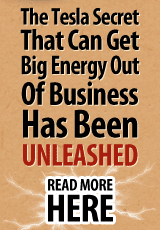Can This New Solar-Powered Device Purify Polluted Water?
by Kevin Samson
Water shortages continue to make the news across the world, and governments seem to be offering very few if any solutions. Recently, I covered a novel low-cost, simple device called Warka Water that aims to extract water from the air and offer regions with little to no infrastructure the possibility of water self-sufficiency.
However, in addition to shortages, pollution is another grave problem; even if some areas technically have water it is often unfit to drink.
A sophomore in the Department of Civil, Structural and Environmental Engineering at the University of Buffalo, Deshawn Henry, believes he has found a solution.
[do_widget id=text-16]
Henry has created essentially a six-foot tall magnifying glass that he has termed a “water lens.”
It is another low-cost solution that can reach areas that have little in the way of conventional infrastructure, offering a speedy way to self-sufficiency and decreased deaths from unsafe water.
Since the frame for the lens can be constructed from commonly found materials — wood, plastic sheeting and water — the lens can be built for almost no cost, offering an inexpensive method to treat water.
The device may not look like much, but it can heat a liter of water to between 130 and 150 degrees Fahrenheit in a little more than an hour, destroying 99.9 percent of bacteria and pathogens.
“The water lens could have a huge impact in developing countries,” says Henry … “Millions of people die every year from diseases and pathogens found in unclean water, and they can’t help it because that’s all they have. Either they drink it or they die.”
 Henry’s device is still in the testing phase, but shows promise. The University of Buffalo relates the details that still need to be worked out in order to provide the most efficient, practical system that could be used on widespread basis by families.
Henry’s device is still in the testing phase, but shows promise. The University of Buffalo relates the details that still need to be worked out in order to provide the most efficient, practical system that could be used on widespread basis by families.
The lens consists of a plastic sheet covered with water supported by a wooden frame. The frame holds a small container of water below the lens in line with a focal point created from a concentrated ray of sunlight. Barring the weather, once assembled, the lens functions freely. Due to the sun’s movement throughout the day, Henry needs to repeatedly shift the container to match the focal point.
Henry’s research tested how altering the thickness of the plastic sheet and the volume of water over the sheet affected the efficiency of the lens. The device was tested with plastic sheets that were 0.7, 1 and 2 millimeters thick, and water volumes of four, six and eight liters.
The study found that adding more water to the lens improved efficiency, as larger areas of water transmitted more energy from sunlight. However, thicker plastic sheets consumed more energy from light, lowering the lens’ efficiency.
A plastic sheet that was too thin or excessive amounts of water could break the lens. Henry concluded that the 0.7-millimeter sheet could efficiently heat the container while supporting eight liters of water, but any more and the sheet could potentially break.
With 1.1 billion people lacking access to clean drinking water, Henry’s work could make a difference in the world, says Jensen, who frequently mentors undergraduate students during summer research programs.
“I have seen how intense research activities can inspire UB students and educate the next generation of innovators,” says Jensen. “Deshawn’s work would allow a family in sunny regions to treat drinking water without having to expend energy or rely on imported technologies.”
Building a larger water lens that remains efficient is the next step in Henry’s research. A family of five would need a lens at least three times the size of the device he constructed, which was designed to heat one liter of water at a time, says Henry.
As fresh water continues to dwindle with recent studies showing that global crisis levels will be reached by 2040 and corporate water predators seek to hoard this “blue gold,” Deshawn Henry’s invention could be a welcome practical solution to maintaining water sovereignty.
Have you come across other solutions to solve water shortages and purification? Please leave your information in the comment section below.



